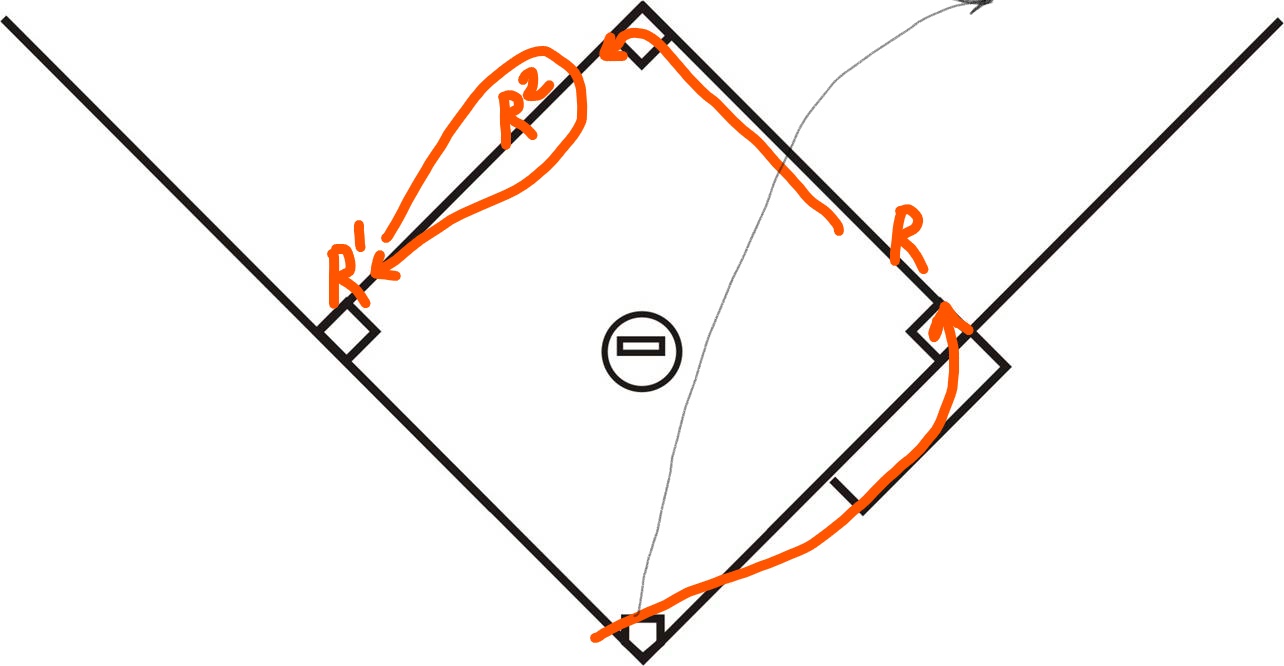Passing a Preceding Runner

Rule 8-4-2m seems simple enough. Any runner is out when he "passes an unobstructed preceding runner before such runner is out."
As most lawyers know, however, applying a simple rule can be challenging in an adversarial or competitive contest.
Here is a scenario that tests the meaning of Rule 8-4-2m when applied in an unusual circumstance:
- No outs in the inning. R1 is on second base. R2 is on first base.
- A high fly ball is hit deep into the outfield.
- R1 advances almost to third base and R2 rounds second base while the ball is still in the air.
- Neither runner tagged up (i.e. remained on base or touched the base after a fly ball or line drive touches a defensive player). See Rules 8-2-4 and 8-4-2i.
- R1 suddenly realizes his precarious situation if the ball is caught and retreats toward second base, passing R2 who momentarily freezes upon seeing R1 approaching from third base.
- By this time, the ball has hit the ground (without being caught).
- R1 reverses direction and again passes R2 who is returning to second base.
- By the time the throw from the outfield reaches the infield, R1 is on third base, R2 is on second base and the batter runner is on first base.
R1 passed R2 twice, but R1 is the preceding runner.
Is anybody out?
If so, who is out?
The coach for the defense vociferously argues that R1 (who ended up on third base) should be out because R2 became the preceding runner when R1 passed him the first time (running back to second base), and then passed him again (while running to third base).
The offensive coach steadfastly maintains that nobody should be out because the R1 is the preceding runner and R2 never passed him.
What is the umpire crew to do?
Here’s the call: R2 is called out and R1 remains on third base. There is now one out in the inning.
Both coaches are upset, and the bleachers are in an uproar.
The umpire, utilizing the umpire’s best people skills, explains to the coaches:
- The designation of "preceding runner" never changes, as it is based on the official batting order.
- For the purpose of applying Rule 8-4-2m, as soon as any runner is beyond a preceding runner by act or omission (regardless of how the circumstance occurred) that runner has passed a preceding runner and is out by rule.

